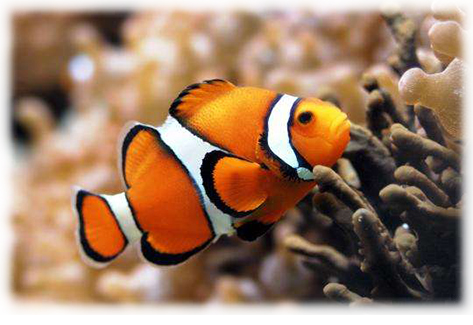Animals Are Intelligent Sentient Beings
By Hermitkid, Miaoli, Formosa (Originally in Chinese)
It has been a common belief in our society that fish are non-intelligent beings. This theory is rapidly changing since new research shows that fish are actually socially intelligent creatures that do not deserve the reputation of “dim-wits” of the animal kingdom and instead they are cunning and even cultured. 
Researchers from the Universities of Edinburgh, St. Andrews and Leeds in the UK have gathered together powerful evidence that puts a stop to the image of fish as “pea-brains” with a “three-second” memory.
Scientists observed that fish recognized individual “shoal mates” and respect the social prestige of others. It has also been found that they use tools to build complex nests and exhibit long-term memory.
In some areas of cognition, marine animals are comparable to apes and monkeys, the most extraordinary example being the dolphin. Acrobatic performances by a school of dolphins may be widely perceived as a sequence of well-rehearsed actions. Certainly, the dolphins may be following instructions, but they are able to spontaneously accomplish the details of each action by themselves. They choreograph their own dances. That is to say, the dolphins must communicate among themselves in advance in order to put on a synchronized performance. Animal intelligence may be measured by dividing the weight of the brain by that of the body. The result places dolphins next to human beings and much higher than non-human primates on this measuring scale.
A recent study by British scientists showed that many animals are much more intelligent than previously imagined. In a facial recognition test, a lamb was able to distinguish repeatedly faces projected on a television screen. Studies also show that just like chimpanzees, pigs can also control the joystick in front of a computer screen. They can be trained to master action skills within shorter timeframes than dogs require. Some pigs can serve as watchdogs, and some are even capable of detecting landmines with their noses because they have a highly developed smelling faculty. In some parts of France, farmers rely on pigs to harvest truffles, a very expensive edible fungus that grows underground.
British scientists also observed chickens learning to adjust the temperature regulator in the barn. An American scientist studying the social behavior of chickens found that a rooster clucks to tell the hens that he has found food, and expresses his opinion of it by uttering sounds of different pitches. When he sees food that he likes, he bursts into a series of quick clucks and the hens gather rapidly to enjoy it. However, if only ordinary feed is given, the rooster issues slow clucks to indicate his disappointment, attracting only half of the hens. Scientists studying birds also discovered that many of them are very intelligent. Crows, for example, are very clever in their reliance on human strength. For instance, they place nuts they cannot crack on busy roadways, so that the traffic cracks the nuts for them.
Researchers noticed that a cow looks very excited when it has learned new things. Experienced dairy farmers also found that cows have color preferences. This animal is very similar to humans in social behavior; they care about each other, and even raise their young the way humans do. Calves, like human babies, act childishly to attract the attention of their mothers.
According to Dr. Jane Goodall, who is devoted to studying chimpanzees, intelligence assessments indicate that livestock are smart animals, and therefore should not be consumed by humans. When she realized this fact, she immediately stopped eating meat, stressing that human beings should minimize their meat consumption.
http://www.archure.net/psychology/carlsagan.html
http://news.bbc.co.uk/chinese/simp/hi/newsid_4600000/newsid _4603000/4603091.stm
